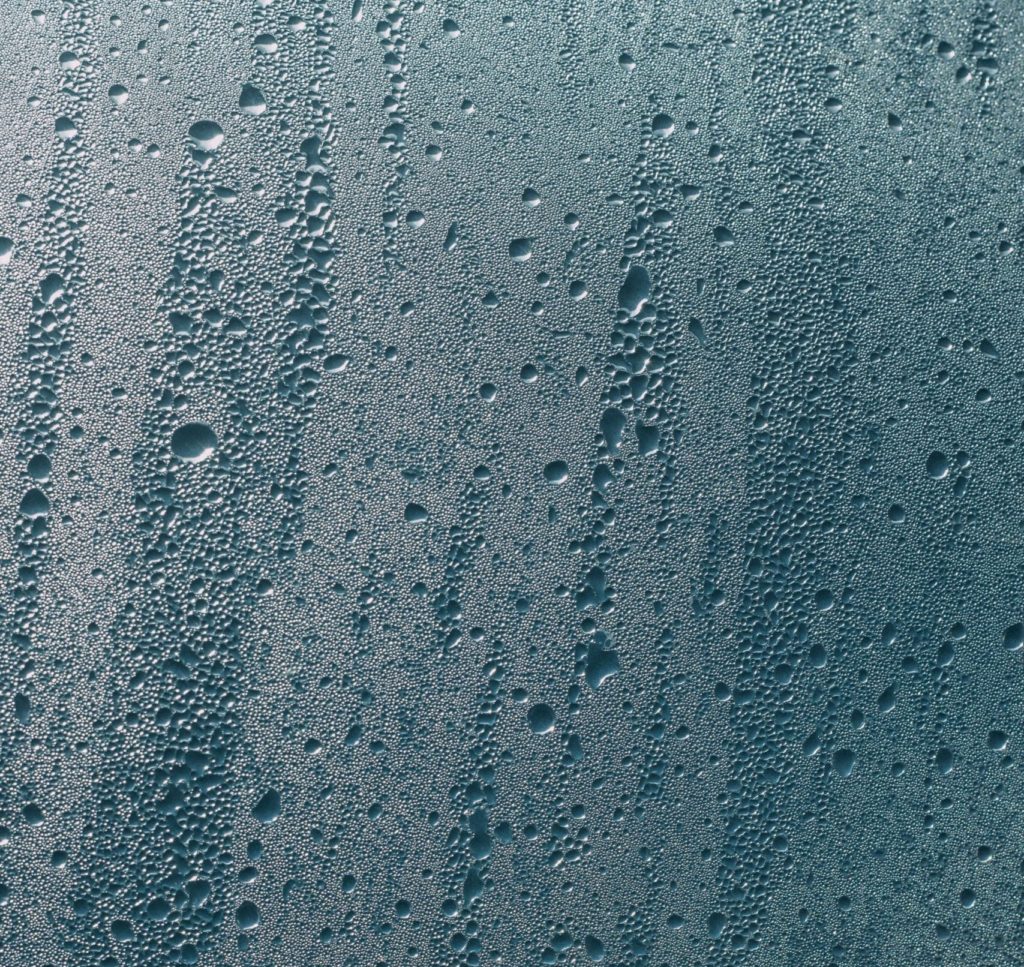Condensation is a common household problem, and it’s often spotted on double glazing. This may or may not indicate a problem with your double glazed units. We’ll explain how you can determine whether condensation is a cause for concern or a perfectly normal occurrence, and how it can be dealt with.
What is Condensation?
Condensation is the term used to describe vapor turning into a liquid.
 The condensation described above is the most common type; this is referred to as surface condensation. There are other forms of condensation, too:
The condensation described above is the most common type; this is referred to as surface condensation. There are other forms of condensation, too:
- Cold-bridge condensation
- Warm-front condensation
- Reverse condensation
- Radiation condensation
We’ll explore these in more detail later on.
Why Does Condensation Occur?
Condensation occurs when warm air rises and then cools.
When the hot air is cooled, it can no longer hold the water vapor. The vapor will condense and turn into its liquid form. The same process applies when warm air touches a cold wall or window. The warm air cannot hold its form due to the low temperatures of a wall or window. The air then becomes a liquid, and this is when you’d see water dripping down the window’s surface.
Causes of Condensation
As mentioned above, condensation is caused by the changes of temperature; whether that be the changes of air temperature or the difference in temperature between an internal wall and room’s temperature.
By condensation-type, the causes of condensation are:
- Cold-bridge condensation – this is similar to surface condensation; however, it occurs on external walls and window sills. This may lead to your window sills rotting.
- Warm-front condensation – this type of condensation mainly occurs in uninhabited houses. Warm, damp air is brought inside a cold house, it then condenses and produces a liquid. This type of condensation is particularly common during the winter.
- Interstitial condensation – this is commonly found in insulation or air-conditioning units. Warm, damp air penetrates the insulation or air-con, and produces water as it cools insides it.
- Reverse condensation – found mainly in the summer months; if water is on the exterior wall of a property, and the sun dries it, the water vapor is pushed into the bricks. When the vapor meets the insulation barrier, the vapor cools and turns into water.
- Radiation condensation – also referred to as ‘clear night condensation’. If the temperature outside drops dramatically in the evening, condensation will occur on the underside of roof coverings.
There are a few household activities that cause condensation, too:
- Cooking
- Drying clothes on a radiator
- Washing or drying clothes with improperly fitted vents
- Washing up using hot water
So why do I get Condensation on my Double Glazed Windows?
Put simply, the surface of your windows is cooler than the rest of the air in the room. The warm air reaches the cool surface of the double glazed window and turns to water. You’ll find that condensation is more prominent in winter when outside temperatures are lower. Condensation on the surface of windows is completely normal.
What About Condensation Inside Double Glazing?
If you notice condensation between the glass panels of your double glazed windows, this indicates a problem with the seal. Double glazed units that are intact shouldn’t form condensation as air cannot get between the panels to condense.
When condensation appears inside your double glazing, it’s probably not doing its job effectively anymore. This is known as a blown window, or a blown seal. Air and moisture are let through and the glass will fog. Your window is no longer energy efficient or providing appropriate insulation. You may need to replace the glass unit or the whole window, so keep an eye out for this type of condensation.
How To Get Rid Of Condensation
In a general sense, you can treat and get rid of condensation by keeping your home well-ventilated. Let’s dig a little deeper and break this down by the type of condensation.
For surface, cold-bridge, and warm-front condensation, keeping the room ventilated will get rid of condensation. This can be something as simple as opening windows; however, you can purchase items specifically for preventing condensation in your home such as a dehumidifier.
For interstitial condensation you also need to control the internal temperature; however, it’s best to install vents, dehumidifiers, or fans for this form of condensation.
For reverse condensation and radiation condensation, these can be cleared by using infrared heating. Infrared heating doesn’t heat the air within your home, it heats the objects that are in close proximity to it. To heat up objects or your internal walls, infrared heating is a great choice.
Getting Rid of Condensation on Double Glazing
When condensation builds up, start by ventilating the area by opening the window. You can also remove excess moisture with a window vac or a dry cloth. Make use of extractor fans if you have one in the room, or try a dehumidifier if condensation is a regular problem. You could also try placing a moisture absorber on your windowsill.
How To Prevent Condensation Occurring
Preventing condensation is as simple as getting rid of it. Keep your home well-ventilated and the internal temperature warm. Use infrared heating to heat internal walls and windows. If your internal walls and windows are warm, water vapor will not cool, therefore won’t turn into its liquid form. If condensation is a real problem in your home, you could consider triple glazing. The extra glazed panel will act as an additional barrier to the outside, regulating the temperature and reducing condensation.
 10-year guarantee
10-year guarantee Made in Britain
Made in Britain Variety of finance options
Variety of finance options 10+ years' experience
10+ years' experience